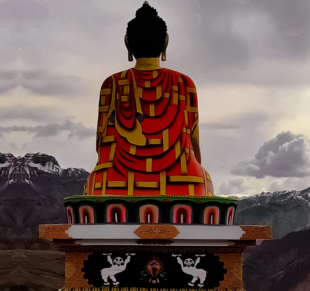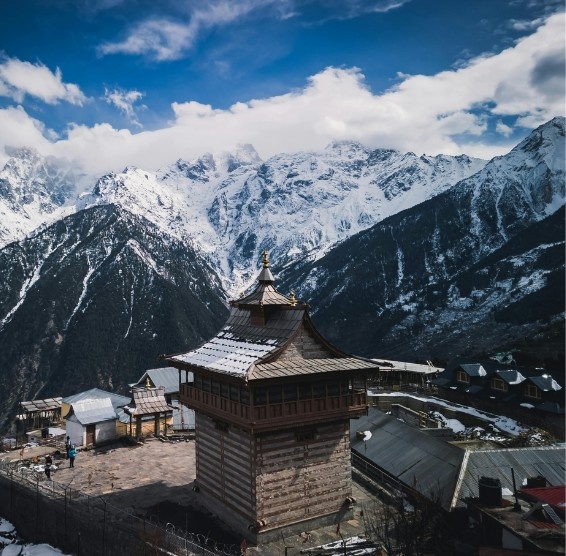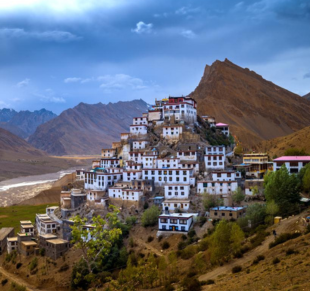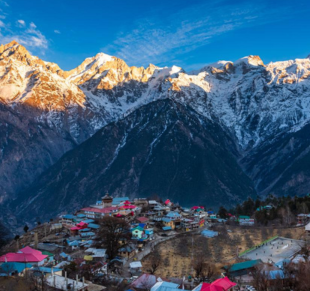Kinnaur & Spiti: Raw Beauty and Quiet Life in the High Himalayas
Drive through high mountain roads, discover quiet villages, and feel the magic of untouched landscapes.
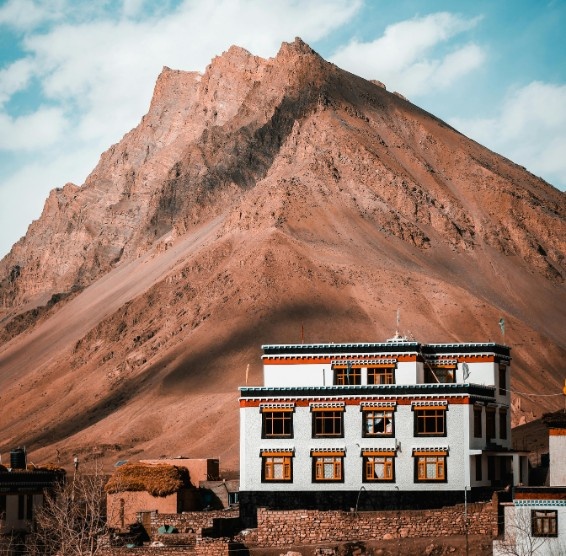
Kinnaur & Spiti – A Himalayan Odyssey
Imagine driving along Alpine roads lined with apple orchards and foggy deodar forests, then going over a high pass into a stark desert under a sapphire sky. The Kinnaur–Spiti region in Himachal Pradesh is all about that big difference. One day you could sit by the calm, turquoise Nako Lake and drink tea while snow-covered peaks surrounded you. The next day, you could hike to an old Buddhist gompa on a cliff above the Spiti River that was blowing in the wind. People in the area call Kinnauris "Kinners," which means "half-god, half-human" in their language. You'll feel the magic of the area as soon as you get there. The friendly villagers wear colorful woolen caps, and there are monasteries that have been around for hundreds of years. There are also festivals that honor mountain spirits. Kinnaur and Spiti together make for an unforgettable high-altitude adventure that is green, spiritual, and wild.
Location & Geography Overview of Kinnaur spiti - The Kinnaur–Spiti area is in the northeast corner of Himachal Pradesh, tucked between Tibet (to the east) and the cold deserts of Ladakh (to the north). Kinnaur district is a beautiful rugged land depleted by streams of the Sutlej River. Its raised slopes and apple orchards reach up to the rising Kinner Kailash range, whose highest peaks surpass 6,000 meters (Leo Pargyal at 6,816 m is Himachal’s tallest). The famous Kinner Kailash peak (6,050 m) is sacred in Hindu legend – pilgrimage season sees devotees trekking around it, gazing up at the towering Shivling rock at 4,800 m. By contrast, beyond Kinnaur’s green valleys lies Spiti – a high-altitude cold desert. Spiti Valley (around Kaza) sits at 3,200–4,000 m elevation with a dry, “middle-land” climate. Sand, limited juniper scrub and rock carving wind-gashed views define Spiti, it truly feels “far from the madding crowd.” In Spiti, streams from melted snow and glaciers feed the twisted Spiti River. In winter it plunges to −25 °C, while even summer highs barely reach 10–15 °C. The valley is bounded by huge ranges – Zanskar to the north, Lahaul (via Kunzum Pass) to the west, and the Great Himalaya to the south. It’s cut off 5–6 months a year by snow. Yet these extremes create unique beauty- crisp blue skies, star-filled nights, and the thrill of pure silence. Kinnaur (1,500–6,400 m) and Spiti (3,200–6,000 m) form a remote trekker’s paradise. Kinnaur’s lower valleys get monsoon rains (July–Sept) and bustle with pine and oak, whereas upper Kinnaur and Spiti lie in the rain-shadow, sporting a dry landscape like Tibet. In sum, you’ll see a lush Himalayan “green” valley give way to a stark moonscape – a significant geographical journey unlike anywhere else on Earth.
Top Tourist Destinations of Kinnaur & Spiti
- Chitkul & Sangla Valley (Kinnaur):Nestled on the Baspa River at 3,450 m, Chitkul is Kinnaur’s most remote village – the last inhabited spot before the Tibet border. It’s famous ffor pure mountain air and traditional slate-roofed homes. Nearby Sangla Valley (“Pass of Light” in Tibetan) is green in summer, with apple orchards, pine forests, and the 16th-century Kamru Fort (now a temple). In the morning, the peaks are covered in mist. The Buddhist Mathi Devi temple in Chitkul, which is over 500 years old, shows how Hindu and Buddhist cultures have mixed here. Don’t miss a meal at “Hindustan ka Aakhri Dhaba,” the friendly roadside dhaba (canteen) famous for garam rajma-chawal with ghee and local tales.
- Kalpa & Kinner Kailash Viewpoint (Kinnaur):With its famous views of Kinner Kailash, the village of Kalpa is surrounded by lush orchards. Visit to the “Suicide Point” early in the morning for jaw-dropping sunrise light on the towering Shivling peak. Kinnauri artistry can also be seen in Kalpa's temples and silver jewelry stores. In autumn, Kalpa glows gold with apple harvest, and pilgrims begin the 12-day Kinner Kailash Parikrama trek from here.
- Nako Lake & Village (Kinnaur): A serene mountain lake in upper Kinnaur’s Hango valley, Nako is just over the border into Spiti’s rain-shadow. Red-capped villagers and barley fields encircle the mirror-calm, turquoise lake at 3,662 meters. It’s a tranquil stop and a great acclimatization point en route to Spiti valley.
- Key (Ki) Monastery :It is the largest gompa in Spiti Valley. It sits on a hilltop 4,166 m above Kaza. Key is a spiritual training center and the "anchorage" of Spiti Buddhism. It has been around since the 11th century. Inside are vivid 14th-century wall-paintings and statues, and hundreds of studying monks. You can see the winding Spiti River from the courtyard. Key is a must-visit cultural highlight just north of Kaza town.
- Tabo Monastery (Spiti):The great translator Rinchen Zangpo built Tabo Monastery in Spiti in 996 CE. People often call it the "Ajanta of the Himalayas." It is the oldest Buddhist community in India that has been around for a long time. There are 9 temples, 23 chortens (stupas), and walls covered in beautiful frescoes and thankas (scroll paintings) in the complex. The nearby nunnery and meditation caves make it even more mysterious. Many people come here to pray or look at the old art. The desert creating and historical feel of Tabo make it one of the best things to see in Spiti.
- Dhankar (Drang-Drung) Monastery (Spiti):At 3,894 m, Dhankar Gompa is high above where the Spiti and Pin rivers meet. This old fort-monastery sits on top of a 300-meter-high cliff, giving you one of the best views of a monastery in India. Dhankar was the capital of Spiti's nono kings in the 17th century. It has ancient murals and a rare statue of Vairocana, the Buddhist god of the sky. The steep hike up to Dhankar gives hikers stunning views of the wild Pin Valley.
- Pin Valley National Park (Spiti): Pin Valley is India's only cold desert national park. It is a hidden gem that lies between Spiti and Bhaba Valley. It covers an area of 675 km² and is home to shy snow leopards, Siberian ibex, Himalayan wolves, and bharal (blue sheep). Spring brings flowers that are good for medicine. People who like to explore camp here or hike deep into Kibber or Mud villages. The lunar landscapes and ancient Tangyud Gompa in Pin Valley are unforgettable.
- Other highlights: The Spiti Circuit has a lot more to offer, like Kaza's busy market and Tibetan cafes, Langza and Hikkim villages with ancient fossils and the world's highest post office, the peaceful Chandratal (Moon Lake) trek from Kunzum Pass, and many high-altitude meadows and passes. Every turn, whether you're walking or driving, gives you a new grand view.
Culture, People, Traditions & Festivals
T The people of Kinnaur–Spiti are friendly and strong, and they have a lot of different traditions. Most people in Kinnaur are Hindu (about 77%), but there is also a large Buddhist minority (22%). About 62% of people in Spiti practice Tibetan Buddhism, while the rest are Hindus. A village might have both a Hindu temple and a Buddhist gompa, which shows how different religions can work together. The Mathi Devi temple is next to the Kagyupa temple in the middle of Chitkul. Kinnauris (Kinners) wear distinctive colorful caps and silver jewelry – the women pile on coral necklaces and traditional aprons for festivals. The Kirat (local priest) culture is very strong - many villages have sacred lakes or caves where people worship gods. One local legend says Kinnauris are half-god, and indeed you’ll see stone shrines on ridges where villagers pay respects.. Festivals are full of life. In Kinnaur, the Raulane festival (March/April) involves masked “brides and grooms” performing dances to honor mountain spirits (the “Sauni fairies”) – a folk ritual seen nowhere else. The Phulaich flower festival in August honors flowers that grow on mountains. In Spiti, Buddhists celebrate Losar (the Tibetan New Year) in January or February. Hindus celebrate Diwali/Losai in the fall, often lighting lamps in high passes. Many villages have local fairs (melas) where people eat, dance, and herd animals in a parade. People say that Kinnauri villages are very welcoming because they always have roti-chai or thukpa (noodle soup) for travelers who get lost. There aren't many people who speak English; Bhoti-Tibetan and Hindi are more common. All Kinnauris speak Pahari or Kinnauri at home, and Spiti Bhoti, a Tibetan dialect, is also common. Bring some local sweets (like almonds from Malana) or simple gifts for families. They will be so happy that you did.
Travel Tips for First-Time Visitors of Kinnaur spiti valley
- Get used to the weather and pack layers. The heights here range from about 2,000 m in Kalpa to about 4,300 m in Langza/Kibber. Take it easy the first day or two, as headaches and mild breathlessness are common. Even in the summer, you should wear layers of clothes like fleece, a windbreaker, a hat, and gloves. The mornings and nights can be very cold. If you're going to Spiti in the winter, you need to wear thermal clothes because the temperature can drop to -25°C.
- Best Season and Roads: Travel between June and October for safe access. Check the roads every day; during the monsoon season, landslides can happen on Himachal highways, and in the winter, they can close. The Shimla–Kinnaur–Spiti (NH-5) route is usually open from April to June, and the Manali–Kaza route (via Atal Tunnel and Kunzum La) opens by the middle of May or June. Set aside extra days for travel because it takes a long time to get to the mountains and there are many interesting things to do along the way.
- Getting around: Renting a sturdy SUV with a local driver is highly recommended. There are buses and shared taxis that go from Shimla to Reckong Peo/Kinnaur and from Manali to Kaza, but they don't run very often. Buses run by the state can be crowded and not very reliable. You can rent local taxis and jeeps for day trips, like the one to Key Monastery from Kaza.
- Money and connectivity: There are only ATMs in big cities like Shimla, Rampur, and Kaza. Carry cash in small denominations for tea shops and local markets. The mobile network isn't very good, but BSNL/WiMax works best in remote villages. Get maps that work without an internet connection and let your family know where you're going. A lot of homestays don't have Wi-Fi. Also, bring some basic medicines with you because there aren't many pharmacies after Rampur.
- Follow the rules: This is tribal land with strong traditions. Always get permission before taking pictures of people. Take off your shoes in gompas and temples. Wear clothes that aren't too revealing. When you are in a monastery, follow the rules for taking pictures. Learn how to say "Namaste" in Hindi or Bhoti.
- Permits: Indian tourists do not need special permits for Kinnaur or Spiti by road (except normal ID checks). Foreigners should check with tour operators about the Inner Line Permit for Lahaul-Spiti region. Chitkul is the "last village." Beyond it is a zone for the Indo-Tibetan Army.
- Health and Safety: Altitude sickness is a real thing. Drink plenty of water, stay away from alcohol at first, and think about taking acetazolamide if you get headaches often. Around 3,500 m, blood oxygen levels can drop. The sun is strong at high altitudes, so use a lot of sunscreen 50+ SPF recommended. Don't drive at night because there are landslides and blind hairpins.
- Souvenirs and Food: Kinnaur is known for its apple orchards, which grow sweet apples that last a long time. If you can carry it, buy a box! You can also find rajma beans, local apricots, honey, and shawls made by hand. Tibetan prayer flags and colorful textiles are great gifts in Spiti.
Kinnaur and Spiti are more than just places on a map- they are experiences that will stay with you. You can either stand on a windswept pass and watch clouds roll over Kinner Kailash's peaks, or you can settle into the chanting prayers of a remote monastery as the last light of the day fades. This highland world will inspire you, whether you come for adventure, culture, or spiritual peace. So bring your warmest coat and your sense of wonder. Plan your route, with Mystical Himachal. The Kinnaur–Spiti journey takes you through legend, beauty, and wild nature. Go ahead and let these two valleys touch your heart.




